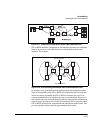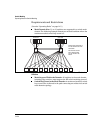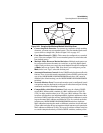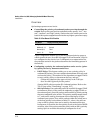
Quality of Service (QoS): Managing Bandwidth More Effectively
Introduction
Introduction
QoS Feature Default Menu CLI Web
UDP/TCP Priority Disabled — page 15-14 page 15-57
IP-Device Priority Disabled — page 15-20 “
IP Type-of-Service Priority Disabled — page 15-25 “
LAN Protocol Priority Disabled — page 15-37 “
VLAN-ID Priority Disabled — page 15-39 “
Source-Port Priority Disabled — page 15-44 “
DSCP Policy Table Various — page 15-51 “
As the term suggests, network policy refers to the network-wide controls you
can implement to:
Ensure uniform and efficient traffic handling throughout your network,
while keeping the most important traffic moving at an acceptable speed,
regardless of current bandwidth usage.
Exercise control over the priority settings of inbound traffic arriving in
and travelling through your network.
Adding bandwidth is always a good idea, but it is not always feasible and does
not completely eliminate the potential for network congestion. There will
always be points in the network where multiple traffic streams merge or where
network links will change speed and capacity. The impact and number of these
congestion points will increase over time as more applications and devices
are added to the network.
When (not if) network congestion occurs, it is important to move traffic on
the basis of relative importance. However, without Quality of Service (QoS)
prioritization, less important traffic can consume network bandwidth and
slow down or halt the delivery of more important traffic. That is, without QoS,
most traffic received by the switch is forwarded with the same priority it had
upon entering the switch. In many cases, such traffic is “normal” priority and
competes for bandwidth with all other normal-priority traffic, regardless of
its relative importance to your organization’s mission.
This section gives an overview of QoS operation and benefits, and describes
how to configure QoS in the console interface.
15-2


















